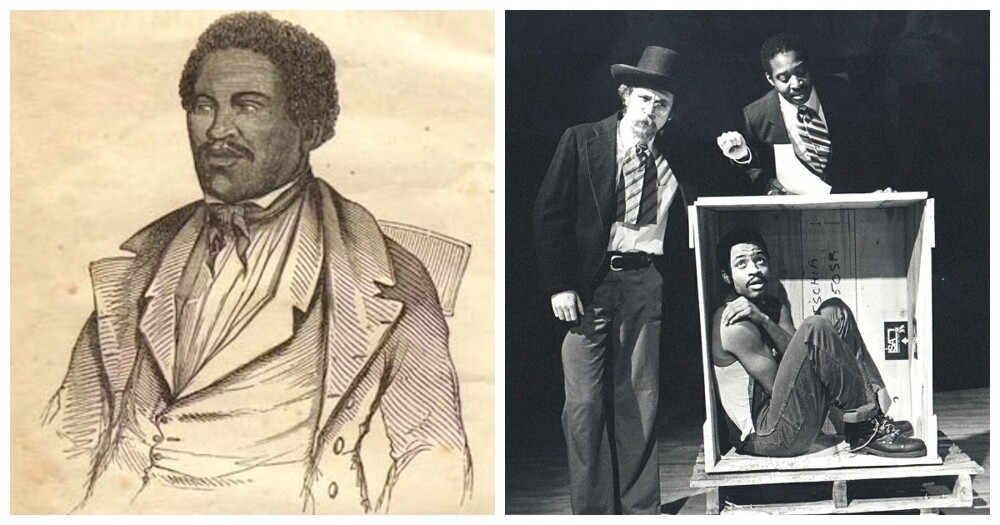This man climbed into the box as a slave and came out free. 
But not everyone can overcome the trials that he had to go through between two statuses. 
Freedom is the inalienable right of every person in the world. However, personal freedom was won with great difficulty, and the path to it was thorny and bloody.
The story of Henry "Box" Brown is certainly one of the most interesting stories of the quest for freedom. Born a slave, Henry Brown received the nickname “The Box” for a reason, because it was in it that he made his way to freedom.
Henry Brown 
Henry Brown
During his lifetime, Henry Brown was remembered as an abolitionist lecturer in the States and a showman in England. He was born a slave sometime in 1815 or 1816 on a plantation in Louisa County, Virginia.
In his autobiography, Henry recounted his early days on the plantation and his vivid memories of his parents. He also believed that he might have had brothers and sisters.
In his autobiography, Henry also states that his master was a kind slave owner, but also enjoyed his position and the respect his slaves showed him.
When Henry was 15 years old, his master died. And the young man had to move to Richmond. There he began working in a tobacco factory owned by the son of his previous owner, William Barrett.
The siblings, with the exception of one, were transferred to other plantations. Brown stated that their new master, William Barrett, kept Sister Martha as his mistress.
Henry Brown married another slave, Nancy, in 1836. Nancy worked on a nearby plantation and the couple had three children. Henry sometimes sang in the church choir.
Brown became a professional in his field and was in good standing at the factory. But his wife Nancy was sold to another slave owner. Apparently, the woman's new owner persuaded Henry to rent a house for Nancy and the children.
In addition, the slave owner extorted money from Henry for a promise not to sell Nancy and the children. However, this was a lie. The slave, along with her children, was sold to another slave owner in North Carolina in August 1848.
Is there a chance of salvation? 
Devastated by the loss of his family, Henry Brown decided it was time to make a change. Moreover, in 1849, the abolition of slavery was increasingly discussed in society. And Henry came up with a unique idea.
He planned to close himself in a box and send him to a free state. Henry Brown developed this plan with the help of fellow choir member James Caesar Anthony Smith and white shoemaker Samuel Alexander Smith.
All three men considered various possible ideas for organizing Henry's escape, but rejected them one by one. Then Brown came up with an interesting, albeit bold idea - to send himself to Philadelphia by rail in a wooden box. Samuel Smith contacted James Miller McKim, a leader of the Pennsylvania Anti-Slavery Society in Philadelphia who was active in railroad activities.
Three men hired a carpenter to make a wooden rectangular box measuring approximately 90cm by 60cm and 75cm high.
The inside of the box was lined with woolen cloth to ensure its safety and had small holes for air access. 
Brown climbed into the box in March 1849. He took with him some cookies, a small flask of water and an awl to make holes for air. The comrades hammered the box with nails and labeled it “Caution on this side,” and then handed the box over to the Adams Express Company delivery point. 
The Resurrection of Henry "Box" Brown in Philadelphia, lithograph by Samuel Rose, published 1850
Henry Brown's journey to freedom was not a comfortable one. During the 27-hour journey to Philadelphia, Henry was transferred to a variety of means of transportation, including wagons, trains, ferries and steamships.
At times he had to endure the pain of his injuries, and during the journey he was laid upside down twice, but he managed to refrain from screaming and remain silent. He was eventually taken to the abolitionist's office in Philadelphia. Coming out of the box, Henry sang a psalm loudly, expressing his joy and gratitude to the Lord for freedom.
New life 
Engraving of the box in which Henry Brown hid and the song he sang as he escaped
The release of Henry Brown gave him that same middle name. The “box” is a literal symbol of the space in which he overcame the path to freedom.
After his release, the man began a completely different life. He became a popular lecturer for the Massachusetts Anti-Slavery Society. At the end of May 1849, Henry Brown took part in the convention of the New England Anti-Slavery Society in Boston, where he received great recognition.
In England, Henry Brown became a popular showman and married again in 1859. He returned to the United States in 1875 and continued his public appearances until 1889. Henry Brown lived the last years of his life in Toronto. He died in June 1897. 
The story of Henry Brown is a symbolic and clear example of the fact that with desire, creative thinking and patience, if not everything, then a lot is possible. Even gaining freedom, even in such a specific way.
Add your comment
You might be interested in:






























